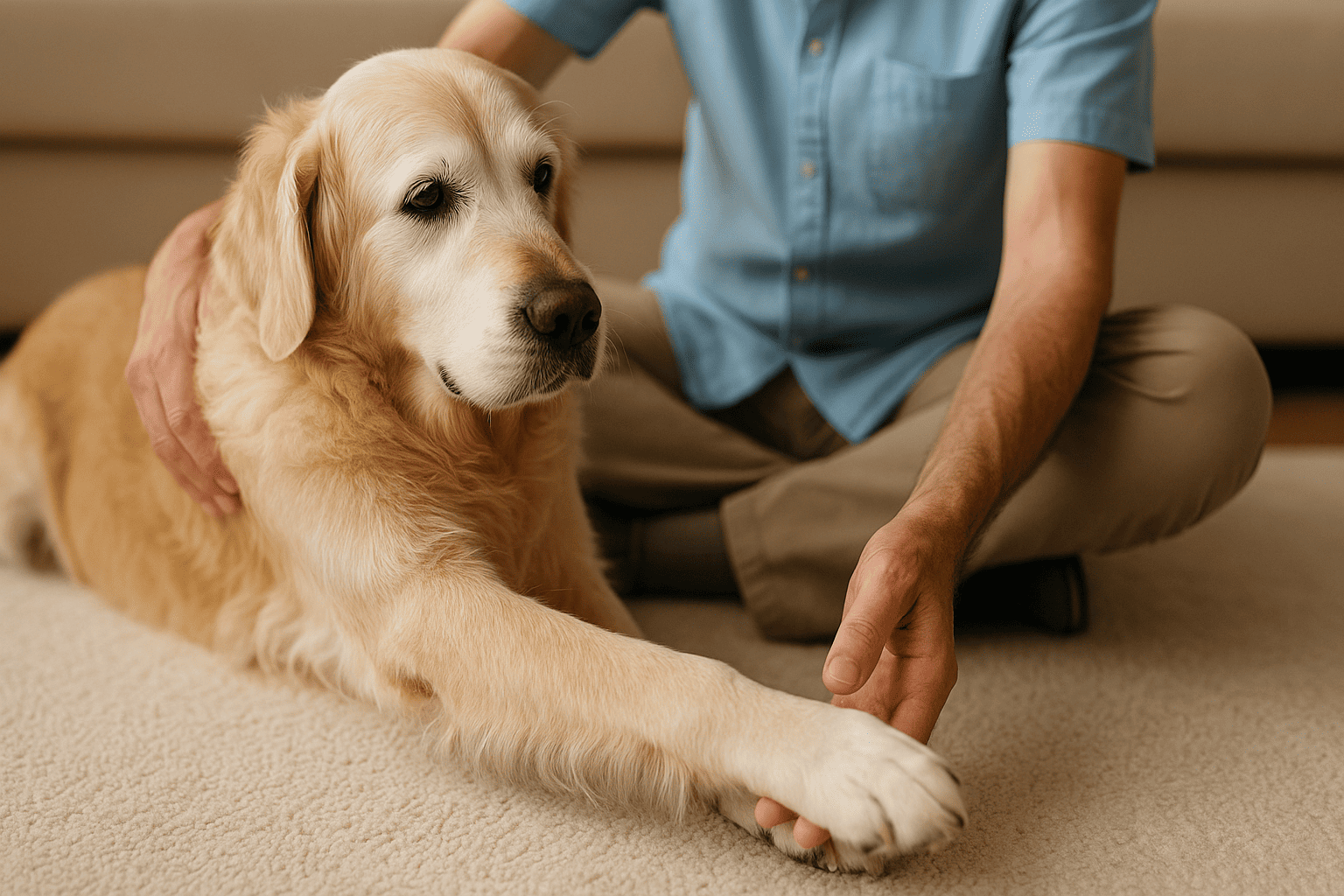As dogs get older, they often face joint and mobility problems, especially due to arthritis and the natural wear and tear of their joints. These conditions can cause discomfort, pain, and limit your dog’s ability to perform everyday activities like walking, climbing stairs, or playing.
Gentle stretching exercises are a safe and effective way to help relieve joint pain and improve the overall quality of life for senior dogs. When done correctly, stretching helps increase flexibility, reduce stiffness, and strengthen muscles—without putting added stress on the joints.
Besides being a healthy routine, stretching also offers a wonderful opportunity to strengthen the bond between you and your dog. With gentle movements and a calm approach, you can create a routine that promotes both physical comfort and emotional connection during your dog’s golden years.
Meta Description
Discover gentle stretching exercises for senior dogs with arthritis. Learn how to relieve joint pain, improve mobility, and strengthen your bond through safe, simple routines.
Benefits of Stretching for Senior Dogs
Regular and careful stretching can lead to noticeable improvements in your dog’s comfort and movement. Here are some key benefits:
Relieves Stiffness and Pain
Aging joints tend to become stiff and painful, especially in dogs with arthritis. Stretching helps relax the joints and surrounding muscles, easing pain and allowing your dog to move more freely and comfortably.
Improves Mobility
Stretching increases joint flexibility and range of motion. Over time, this makes daily activities like walking or climbing stairs easier and more enjoyable for your senior dog.
Supports Muscle Strength
Loss of muscle mass is common in older dogs. Gentle stretches help maintain muscle tone and strength, supporting joint health and improving stability during movement.
Promotes Mental Well-Being
Stretching sessions can be relaxing and emotionally enriching. Your dog enjoys your full attention during these moments, which can reduce stress and strengthen your emotional connection.
Easy Stretching Exercises to Try at Home
These simple movements can be part of your senior dog’s regular routine. Always use a gentle touch, never force a stretch, and keep a close eye on how your dog responds.
Rear Leg Stretch
Gently hold one of your dog’s hind legs and lift it slightly backward. Hold the position for about five seconds, then slowly release. Repeat two or three times on each leg to loosen tight muscles and support flexibility.
Front Leg Stretch
With your dog standing or lying down, gently hold one front paw and extend it forward. Hold briefly, then release. Repeat on the opposite leg. This helps relieve pressure and stretch the front leg muscles.
Neck and Spine Stretch
Use a treat to guide your dog’s head upward, then slowly move the treat to the left and right, encouraging your dog to follow it with their nose. This stretch promotes flexibility in the neck and spine.
Lower Back Massage and Stretch
Place your hands on your dog’s lower back, just above the hips. Using soft circular motions, gently massage and stretch the area to relieve built-up tension in the lumbar region.
Safety Tips for Stretching Senior Dogs
To make sure stretching is safe and beneficial for your senior dog, follow these important guidelines:
Talk to Your Vet First
Always consult your veterinarian before starting any new exercise routine, especially if your dog has known health issues. Your vet can recommend the safest types of stretches based on your dog’s condition.
Respect Your Dog’s Limits
Every dog is different. If your dog shows signs of discomfort—such as pulling away, growling, or tensing up—stop immediately. Never push your dog into a position they resist.
Use Gentle, Slow Movements
Avoid sudden or jerky motions. Slow, steady movements help your dog relax and reduce the risk of injury.
Stick to a Consistent Routine
Stretching two to three times per week is ideal for most senior dogs. Regular sessions will help reduce stiffness and maintain flexibility over time.
Contraindications and When to Be Extra Cautious
Stretching is not suitable for all senior dogs. In some situations, it can do more harm than good.
When Stretching Might Not Be Safe
Avoid stretching if your dog has recently undergone surgery, suffered an injury, or has severe joint inflammation. In these cases, follow your vet’s guidance and consider alternative therapies.
Medical Conditions That Require Extra Care
Dogs with advanced arthritis, hip dysplasia, or spinal issues may benefit from stretching, but the exercises should be done with extreme care—preferably under the supervision of a veterinary physical therapist.
Signs of Discomfort During Stretching
Watch for behavioral signs like rapid breathing, excessive licking, whining, or pulling away. If your dog shows any of these signs, stop the stretch immediately and reassess with your vet’s help.
Testimonials from Dog Owners and Professionals
Many pet owners have shared positive results after incorporating stretching into their senior dog’s routine.
“My 12-year-old Lab started getting up more easily and even seemed eager to go for walks again. These stretches made a big difference in his comfort.” – Márcia, dog owner
Veterinarians and animal physiotherapists also support the use of stretching for older dogs.
According to Dr. Luana Silva, a veterinary physiotherapist:
“Stretching is a simple and effective way to improve mobility in senior dogs. It helps relieve joint and muscle pain without overloading the body.”
Conclusion
Stretching is a gentle and effective way to support your senior dog’s health and comfort. With regular practice, you can help relieve joint pain, improve mobility, and offer your dog a more active and joyful life.
Be sure to follow your dog’s pace, seek advice from your veterinarian, and create a routine filled with patience and affection. Stretching is not just a physical exercise—it’s a loving gesture that can deepen the bond between you and your loyal companion during their golden years.

